
Preserved Coaches
A replica concord coach at Sovereign Hill, Ballarat
A replica Cobb & Co coach at Timbertown
Only
one
Concord
or
"Jack"
coach
of
the
type
imported
from
the
United
States
by
Cobb
&
Co
in
the
1850s
and
1860s survives. According to Deborah Tranter, while
Australian
built
stagecoaches
utilized
the
thorough-brace
technology
found
on
the
Concord
coach,
they
were
generally smaller, lighter, straighter in line and had less room for passengers than the US coaches.
Coaches built at the Charleville coachworks were generally designed for either 8 or 14 passengers.
In
addition
to
reproductions,
a
number
of
original
Cobb
&
Co
stagecoaches
still
exist
in
varying
states
of
preservation. Often repainted in the twentieth century, the provenance of some is now difficult to determine.
These include
An imported "Concord" coach built by Abbot-Downing Company of New Hampshire.
Imported
by
F.B.
Clapp
and
Co,
c1869
and
used
in
the
Ballarat
area.
It
is
preserved
in
original
condition
and
held by Museum Victoria.
Another
stagecoach,
possibly
built
in
Geelong,
Victoria
c1880,
is
held
by
Museum
Victoria.
It
is
believed
to
have been the last mail coach to operate commercially in Victoria - in 1916.
Two
stagecoaches,
numbered
48
and
100,
built
in
Charleville,
Queensland
in
the
late
nineteenth
century,
are
in
the National Carriage Collection at the Cobb & Co
Museum in Toowoomba.
Another
stagecoach
built
in
Charleville,
Queensland,
c1890
is
preserved
at
the
Powerhouse
Museum
in
Sydney.
An
Australian
built
stagecoach,
possibly
also
built
at
the
Cobb
&
Co
factory
in
Charleville
in
the
late
nineteenth
century,
is
in
the
collection
of
the
National
Museum
of
Australia
in
Canberra.
Often
described
as
the
"Nowlands
Coach," it was owned and operated by Nowlands Line of Coaches in the Liverpool Plains district.
An Australian built stagecoach is in the Western Australian Museum at Kalgoorlie.
A locally built stagecoach is on public display in the main street of Hay, New South
Wales
A stagecoach built in Bathurst is on display in the Visitor Information Centre,
Bathurst, New South Wales.
Educational


Cobb
&
Co
was
the
name
of
a
successful
coaching
company
in
Australia,
established
in
1853.
The
name
Cobb
&
Co
grew
to
great
prominence
in
the
late
19th
century,
when
it
was
carried
by
many stagecoachescarrying
passengers
and
mail
to
various
Australian
goldfields,
and
later
to
many
regional
and
remote
areas
of
the
Australian outback.
The
company
name
was
also
used
in
New
Zealand and South Africa.
Although
the
Queensland
branch
of
the
company
made
an
effort
to
transition
to
automobiles
in
the
early
twentieth
century,
high
overhead
costs
and
the
growth
of
alternative
transport
options
for
mail,
including
rail
and
air,
saw
the
final
demise
of
Cobb
&
Co.
The
last
Australian
Cobb
&
Co
stagecoach
ran in Queensland in August 1924.
Cobb
&
Co
has
become
an
established
part
of
Australian
folklore,
and
the
company
has
been
commemorated
in
art,
literature
and
on
screen.[2] Today
the
name
is
used
by
a
number
of
Australian
bus operators.
Establishing the Company
Rhoden's Halfway House, Old Gippstown, built in 1863 at Pakenhamfor the Cobb & Co Gippsland routeThe
original company was established in Melbourne in 1853 at the height of the excitement created by the Victorian
goldrushes, by four newly arrived North Americans - Freeman Cobb, John Murray Peck, James Swanton and
John B. Lamber. Initially the company traded as the "American Telegraph Line of Coaches," a name that
emphasized speed and progressiveness. With financial support from another newly arrived US
businessman George Train, they arranged the importation of several US-built wagons
and Concord coaches.[1] By early 1854, the Company operated a daily service to Forest Creek and Bendigo,
and soon afterwards, expanding the service to Geelong and Ballarat other goldfields.
In common with many operatives, Cobb & Co's horses were changed every 10–15 miles along a stagecoach
"line", often at inns or hotels that could also cater for the needs of drivers and passengers. As Historian Susan
Priestley notes, "Coach lines did not attempt to compete with... railways. Instead, as rail lines extended,
coaches were transferred to feeder routes and were timetabled to link in with trains."
Within a few years, Cobb & Co had established a reputation for efficiency, speed and reliability, although they
had not won any of the lucrative mail contracts. Their imported coaches used thorough-brace technology
whereby thick straps of leather provided suspension to the body of the vehicle, thus providing the passenger
with considerable comfort on the rough roads to the goldfields, by comparison to coaches with traditional steel-
springs.
In
May
1856,
the
four
partners
sold
out.
Cobb
and
Lamber
returned
to
the
US
while
Swanton
continued
in
coaching
for
a
few
more
years.
John
Peck
stayed
in
Melbourne,
eventually
to
establish
a
stock
and
station
agency.
Passing
through
a
number
of
owners,
the
company
rose
to
greater
prominence
after
1861,
when
bought
by
a
consortium
of
partners,
led
by
another
North
American,
James
Rutherford
who,
like
Cobb,
had
arrived
during
the
gold
rush.
Rutherford's
partners
included
Alexander
William
Robertson,
John
Wagner,
Walter
Russell
Hall,
William
Franklin
Whitney
and
Walter
Bradley.
Rutherford
re-organised
and
extended
the
Victorian
services
and
won
a
monopoly
on
major
mail
contracts.By
1870,
most
of
Victoria
was
serviced
by
a
network
of
coach routes.
Under James Rutherford
In
June
1862
Rutherford
oversaw
the
extension
of
the
business
into
New
South
Wales
following
news
of
the
Lambing
Flat
gold
rush.
Rutherford
moved
ten
coaches
from
Bendigo
to
Bathurst
with
great
publicity,
to
announce
and
establish
Cobb
&
Co's
presence.
Bathurst
became
the
headquarters
of
a
new
syndicate,
led
by
Rutherford
and
four
others.
Rutherford
had
intended
to
spend
6
months
in
Bathurst,
but
stayed
on
to
the
end
of
his
days,
becoming
one
of
the
city's
leading
citizens.Rutherford
established
a
Cobb
&
Co
buggy
and
coachworks
in
Bathurst,
and
the
firm
also
began
to
invest
in
properties
-
the
first
being
"Buckiinguy"
station
near
Nyngan,
New
South
Wales.
On
the
road,
Cobb
&
Co
began
buying
out
or
forcing
out
many
New
South
Wales competitors.
Cobb & Co Coach, Kallangur, Queensland, unknown date
In
1865
the
company
again
expanded,
this
time
into
Queensland.
The
first
Cobb
&
Co
service
in
Queensland
was
between
Ipswich
and
Brisbane
in
1865.
Services
were
soon
expanded
into
all
parts
of
Queensland
and
this
allowed
for
otherwise
isolated
communities
to
maintain
regular
contact
with
the
rest
of
the
world.
In
1881
the
firm
became
a
company,
with
a
capital
of
£50,000,
running
some
3000
horses
a
total
of
around
10,000
miles
a
week,
the
largest
transport
company
in
Queensland.
A
large
coachworks
was
established
at
Charleville
in the 1886, which turned out a variety of vehicles including over 120 coaches.
In
1871,
the
formal
links
between
the
Victorian
Cobb
&
Co
company
(taken
over
by
Robertson
and
Wagner)
and
Rutherford's
New
South
Wales
and
Queensland
operation
were
finally
dissolved,
but
harmonious
relations
continued.
In
Victoria,
coaches
carrying
the
name
"Cobb
&
Co"
were
operated
by
four
local
coaching
firms,
running
particular
routes
by
mutual
agreement
and
cooperation.
In
time,
successive
operators
of
the
various
Victorian stagecoach lines would continue to use the trading name Cobb & Co.
Expansion into NSW and Queensland
Another
company,
also
branded
as
Cobb
&
Co,
took
over
the
South
Australian
mail
and
coach
business
of
William
Rounsevell
in
1866
after
several
years
of
ruinous
competition.
Its
ownership
was
held
by
four
interests
of
a
quarter
each.
One
quarter
by
Canadians,
Peleg
Whitford
Jackson
&
Jasper
Bingham
Meggs;
one
quarter
by
Fuller,
Hill
&
Co;
one
quarter
by
Joseph
Darwent
and
one
quarter
by
Rounsevell's
son
Ben
Rounsevell.
The
business was taken over by John Hill & Co and years later was merged into Graves, Hill & Co.
Such
was
the
renown
of
Cobb
&
Co
that
the
name
was
also
used
on
coaches
operating
beyond
Australia.
Charles
Cole,
and
Henry
and
Charles
Hoyt,
who
had
operated
coaches
in
Victoria,
started
companies
bearing
the name in New Zealand in 1863 and Japan in 1868.
Although
he
never
returned
to
Australia,
Freeman
Cobb
took
his
family
to
South
Africa
in
1871
to
establish
a
Cobb
&
Co
Ltd
stagecoach
service
with
Charles
Cole,
operating
between
Port
Elizabeth
and
the
new
diamond
fields at Kimberley. He died at Port Elizabeth in 1878.
Beyond Eastern Australia
Through
the
later
nineteenth
century,
travel
by
Cobb
&
Co
coach
was
increasingly
romanticized
in
literature,
but
when
Henry
Lawson
wrote
the
famous
poem
forewarning
of
its
demise;
The
Lights
of
Cobb
&
Co
in
1897,
the
days
of
coaching
were
already
coming
to
an
end
in
Victoria
and
New
South
Wales,
and
Australia
was
an
increasingly
urbanised
society.
The
nationalistic
art,
music
and
writing
of
late
19th
century
Australia
romanticized
a
pioneering
rural
or
bush
myth
and
Cobb
&
Co,
its
colourful
drivers
and
managers
easily
fell
into
this
tradition.
Writer
Sam
Everingham
also
notes
that
Cobb
&
Co
was
"the
first
great
home
grown
service
provider
Australia
had
known...
Born
out
of
the
country's
gold
rushes,
the
name
Cobb
&
Co
has
come
to
represent
the
pioneering
spirit,
a
willingness
to
battle
against
the
odds,
to
reliably
connect
far-flung
communities."
Carrying
cash
and
gold,
coaches
were
famously
a
regular
target
of
bushrangers.
Everingham
notes
that
Cobb
&
Co's
expansion
into
New
South
Wales
coincided
with
an
increase
in
the
number
of
armed
hold-ups
by
bushrangers.
At
least
nine
coaches
were
attacked
in
the
Bathurst
district,
in
the
seven
months
after
the
company established itself there.
Tom
Roberts,
a
key
member
of
the
Heidelberg
School,
painted
"Bailed
Up"
near
Inverell
in
1895,
modelling
the
figures
on
"local
townspeople,
including
(Cobb
&
Co)
stagecoach
driver
'Silent
Bob
Bates'
who
had
been
held
up by local bushranger Captain Thunderbolt three decades earlier."
Cobb & Co in Folklore
Demise
Cobb
&
Co's
operations
across
Australia
were
eventually
superseded
by
the
expansion
of
railway
networks,
the
arrival
of
cheap,
reliable
automobiles
and
the
emergence
of
Air
Mail.
In
1920,
the
Charleville
coachworks
closed
and
by
1921,
Cobb
&
Co
in
Queensland
had
lost
most
of
its
mail
contracts
running
out
of
Charleville.
The
company
also
had
a
vast
amount
of
debt
due
to
over-expansion
into
industries
like
wool.[19]
Rutherford
had
died
in
1911,
the
same
year
the
Company
approved
its
first
purchase
of
motor
vehicles.
In
New
South
Wales,
the
last
coach
probably
ran
on
the
Hebel-Goodooga-Brewarrina
routes
in
1913,[20]
while
the
last
coach
ran
in
Victoria
from
Casterton
to
Mount
Gambier
in
1916.[21]
Australia's
last
horse-drawn
stagecoach
service
was
run
by
Cobb
&
Co
from
Yuleba
to
Surat
in
Queensland
on
August
14,
1924.
With
the
rapid
decline
in
wool
prices
in
1929,
Cobb
&
Co
Queensland
finally
went
into
liquidation.[1]
Gordon
Studdert,
a
former
employee,
kept the Cobb & Co name as his Surat store business name until his death in 1955.
The 598 kilometre Cobb Highway in western New South Wales is named in commemoration of the company.
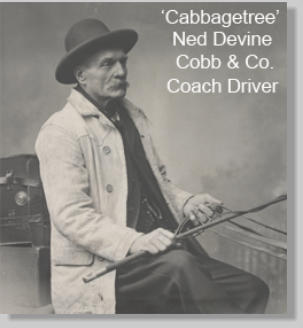


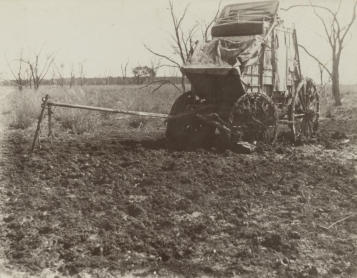
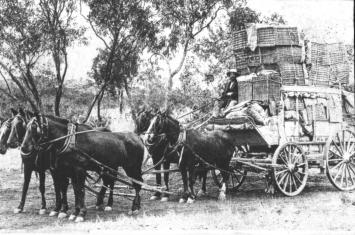
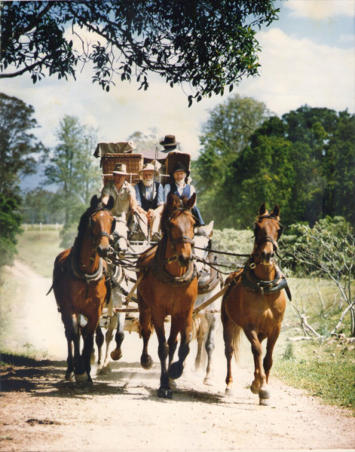
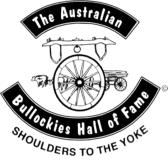
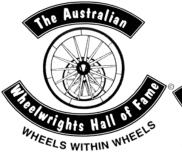
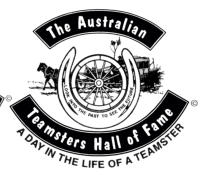
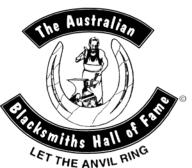
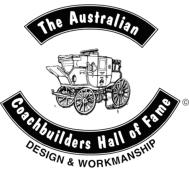
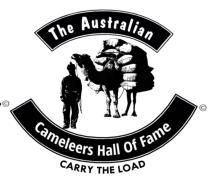
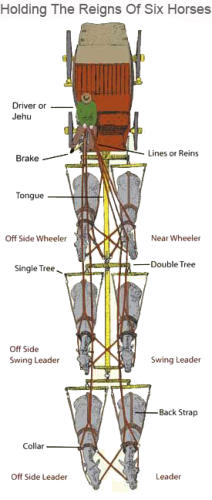

Educational
Cobb
&
Co
was
the
name
of
a
successful
coaching
company
in
Australia,
established
in
1853.
The
name
Cobb
&
Co
grew
to
great
prominence
in
the
late
19th
century,
when
it
was
carried
by
many stagecoachescarrying
passengers
and
mail
to
various
Australian
goldfields,
and
later
to
many
regional
and
remote
areas
of
the
Australian outback.
The
company
name was also used in New Zealand and South Africa.
Although
the
Queensland
branch
of
the
company
made
an
effort
to
transition
to
automobiles
in
the
early
twentieth
century,
high
overhead
costs
and
the
growth
of
alternative
transport
options
for
mail,
including
rail
and
air,
saw
the
final
demise
of
Cobb
&
Co.
The
last
Australian
Cobb
&
Co
stagecoach ran in Queensland in August 1924.
Cobb
&
Co
has
become
an
established
part
of
Australian
folklore,
and
the
company
has
been
commemorated
in
art,
literature
and
on
screen.
Today
the
name
is
used
by
a
number of Australian bus operators.
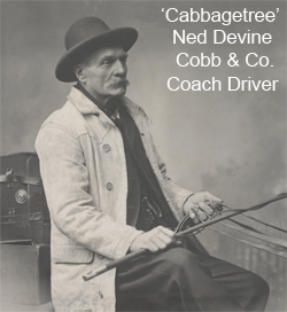
Establishing the Company
Rhoden's
Halfway
House, Old
Gippstown,
built
in
1863
at Pakenhamfor
the
Cobb
&
Co Gippsland routeThe
original
company
was
established
in Melbourne in
1853
at
the
height
of
the
excitement
created
by
the Victorian
goldrushes,
by
four
newly
arrived
North
Americans
- Freeman
Cobb,
John
Murray
Peck,
James
Swanton
and
John
B.
Lamber.
Initially
the
company
traded
as
the
"American
Telegraph
Line
of
Coaches,"
a
name
that
emphasized
speed
and
progressiveness.
With
financial
support
from
another
newly
arrived
US
businessman George
Train,
they
arranged
the
importation
of
several
US-built
wagons
and Concord coaches.[1] By
early
1854,
the
Company
operated
a
daily
service
to Forest
Creek and Bendigo,
and
soon
afterwards,
expanding
the
service
to Geelong and Ballarat other goldfields.
In
common
with
many
operatives,
Cobb
&
Co's
horses
were
changed
every
10–15
miles
along
a
stagecoach
"line",
often
at
inns
or
hotels
that
could
also
cater
for
the
needs
of
drivers
and
passengers.
As
Historian
Susan
Priestley
notes,
"Coach
lines
did
not
attempt
to
compete
with...
railways.
Instead,
as
rail
lines
extended,
coaches
were
transferred
to
feeder
routes
and were timetabled to link in with trains."
Within
a
few
years,
Cobb
&
Co
had
established
a
reputation
for
efficiency,
speed
and
reliability,
although
they
had
not
won
any
of
the
lucrative
mail
contracts.
Their
imported
coaches
used
thorough-brace
technology
whereby
thick
straps
of
leather
provided
suspension
to
the
body
of
the
vehicle,
thus
providing
the
passenger
with
considerable
comfort
on
the
rough
roads
to
the
goldfields,
by
comparison
to
coaches
with
traditional steel-springs.

Under James Rutherford
In
May
1856,
the
four
partners
sold
out.
Cobb
and
Lamber
returned
to
the
US
while
Swanton
continued
in
coaching
for
a
few
more
years.
John
Peck
stayed
in
Melbourne,
eventually
to
establish
a
stock
and
station
agency.
Passing
through
a
number
of
owners,
the
company
rose
to
greater
prominence
after
1861,
when
bought
by
a
consortium
of
partners,
led
by
another
North
American,
James
Rutherford
who,
like
Cobb,
had
arrived
during
the
gold
rush.
Rutherford's
partners
included
Alexander
William
Robertson,
John
Wagner,
Walter
Russell
Hall,
William
Franklin
Whitney
and
Walter
Bradley.
Rutherford
re-organised
and
extended
the
Victorian
services
and
won
a
monopoly
on
major
mail
contracts.By
1870,
most
of Victoria was serviced by a network of coach routes.

In
June
1862
Rutherford
oversaw
the
extension
of
the
business
into
New
South
Wales
following
news
of
the
Lambing
Flat
gold
rush.
Rutherford
moved
ten
coaches
from
Bendigo
to
Bathurst
with
great
publicity,
to
announce
and
establish
Cobb
&
Co's
presence.
Bathurst
became
the
headquarters
of
a
new
syndicate,
led
by
Rutherford
and
four
others.
Rutherford
had
intended
to
spend
6
months
in
Bathurst,
but
stayed
on
to
the
end
of
his
days,
becoming
one
of
the
city's
leading
citizens.Rutherford
established
a
Cobb
&
Co
buggy
and
coachworks
in
Bathurst,
and
the
firm
also
began
to
invest
in
properties
-
the
first
being
"Buckiinguy"
station
near
Nyngan,
New
South
Wales.
On
the
road,
Cobb
&
Co
began
buying
out
or
forcing
out
many
New
South
Wales
competitors.
Cobb & Co Coach, Kallangur, Queensland, unknown date
In
1865
the
company
again
expanded,
this
time
into
Queensland.
The
first
Cobb
&
Co
service
in
Queensland
was
between
Ipswich
and
Brisbane
in
1865.
Services
were
soon
expanded
into
all
parts
of
Queensland
and
this
allowed
for
otherwise
isolated
communities
to
maintain
regular
contact
with
the
rest
of
the
world.
In
1881
the
firm
became
a
company,
with
a
capital
of
£50,000,
running
some
3000
horses
a
total
of
around
10,000
miles
a
week,
the
largest
transport
company
in
Queensland.
A
large
coachworks
was
established
at
Charleville
in
the
1886,
which
turned
out
a
variety of vehicles including over 120 coaches.
In
1871,
the
formal
links
between
the
Victorian
Cobb
&
Co
company
(taken
over
by
Robertson
and
Wagner)
and
Rutherford's
New
South
Wales
and
Queensland
operation
were
finally
dissolved,
but
harmonious
relations
continued.
In
Victoria,
coaches
carrying
the
name
"Cobb
&
Co"
were
operated
by
four
local
coaching
firms,
running
particular
routes
by
mutual
agreement
and
cooperation.
In
time,
successive
operators
of
the
various
Victorian
stagecoach
lines would continue to use the trading name Cobb & Co.

Another
company,
also
branded
as
Cobb
&
Co,
took
over
the
South
Australian
mail
and
coach
business
of
William
Rounsevell
in
1866
after
several
years
of
ruinous
competition.
Its
ownership
was
held
by
four
interests
of
a
quarter
each.
One
quarter
by
Canadians,
Peleg
Whitford
Jackson
&
Jasper
Bingham
Meggs;
one
quarter
by
Fuller,
Hill
&
Co;
one
quarter
by
Joseph
Darwent
and
one
quarter
by
Rounsevell's
son
Ben
Rounsevell.
The
business
was
taken
over
by
John
Hill
&
Co
and
years
later
was
merged
into
Graves, Hill & Co.
Such
was
the
renown
of
Cobb
&
Co
that
the
name
was
also
used
on
coaches
operating
beyond
Australia.
Charles
Cole,
and
Henry
and
Charles
Hoyt,
who
had
operated
coaches
in
Victoria,
started
companies
bearing
the
name
in
New
Zealand in 1863 and Japan in 1868.
Although
he
never
returned
to
Australia,
Freeman
Cobb
took
his
family
to
South
Africa
in
1871
to
establish
a
Cobb
&
Co
Ltd
stagecoach
service
with
Charles
Cole,
operating
between
Port
Elizabeth
and
the
new
diamond
fields
at
Kimberley.
He
died at Port Elizabeth in 1878.

Through
the
later
nineteenth
century,
travel
by
Cobb
&
Co
coach
was
increasingly
romanticized
in
literature,
but
when
Henry
Lawson
wrote
the
famous
poem
forewarning
of
its
demise;
The
Lights
of
Cobb
&
Co
in
1897,
the
days
of
coaching
were
already
coming
to
an
end
in
Victoria
and
New
South
Wales,
and
Australia
was
an
increasingly
urbanised
society.
The
nationalistic
art,
music
and
writing
of
late
19th
century
Australia
romanticized
a
pioneering
rural
or
bush
myth
and
Cobb
&
Co,
its
colourful
drivers
and
managers
easily
fell
into
this
tradition.
Writer
Sam
Everingham
also
notes
that
Cobb
&
Co
was
"the
first
great
home
grown
service
provider
Australia
had
known...
Born
out
of
the
country's
gold
rushes,
the
name
Cobb
&
Co
has
come
to
represent
the
pioneering
spirit,
a
willingness
to
battle
against
the odds, to reliably connect far-flung communities."
Carrying
cash
and
gold,
coaches
were
famously
a
regular
target
of
bushrangers.
Everingham
notes
that
Cobb
&
Co's
expansion
into
New
South
Wales
coincided
with
an
increase
in
the
number
of
armed
hold-ups
by
bushrangers.
At
least
nine
coaches
were
attacked
in
the
Bathurst
district,
in
the
seven months after the company established itself there.
Tom
Roberts,
a
key
member
of
the
Heidelberg
School,
painted
"Bailed
Up"
near
Inverell
in
1895,
modelling
the
figures
on
"local
townspeople,
including
(Cobb
&
Co)
stagecoach
driver
'Silent
Bob
Bates'
who
had
been
held
up
by
local
bushranger
Captain
Thunderbolt
three
decades
earlier."

Preserved Coaches
A replica concord coach at Sovereign Hill, Ballarat
A replica Cobb & Co coach at Timbertown
Only
one
Concord
or
"Jack"
coach
of
the
type
imported
from
the
United
States
by
Cobb
&
Co
in
the
1850s
and
1860s
survives. According to Deborah Tranter, while
Australian
built
stagecoaches
utilized
the
thorough-brace
technology
found
on
the
Concord
coach,
they
were
generally
smaller,
lighter,
straighter
in
line
and
had
less
room
for
passengers than the US coaches.
Coaches
built
at
the
Charleville
coachworks
were
generally
designed for either 8 or 14 passengers.
In
addition
to
reproductions,
a
number
of
original
Cobb
&
Co
stagecoaches
still
exist
in
varying
states
of
preservation.
Often
repainted
in
the
twentieth
century,
the
provenance
of
some is now difficult to determine.
These include
An
imported
"Concord"
coach
built
by
Abbot-Downing
Company of New Hampshire.
Imported
by
F.B.
Clapp
and
Co,
c1869
and
used
in
the
Ballarat
area.
It
is
preserved
in
original
condition
and
held
by
Museum Victoria.
Another
stagecoach,
possibly
built
in
Geelong,
Victoria
c1880,
is
held
by
Museum
Victoria.
It
is
believed
to
have
been
the
last
mail
coach
to
operate
commercially
in
Victoria
-
in 1916.
Two
stagecoaches,
numbered
48
and
100,
built
in
Charleville,
Queensland
in
the
late
nineteenth
century,
are
in
the National Carriage Collection at the Cobb & Co
Museum in Toowoomba.
Another
stagecoach
built
in
Charleville,
Queensland,
c1890
is preserved at the Powerhouse Museum in Sydney.
An
Australian
built
stagecoach,
possibly
also
built
at
the
Cobb
&
Co
factory
in
Charleville
in
the
late
nineteenth
century,
is
in
the
collection
of
the
National
Museum
of
Australia
in
Canberra.
Often
described
as
the
"Nowlands
Coach,"
it
was
owned
and
operated
by
Nowlands
Line
of
Coaches in the Liverpool Plains district.
An
Australian
built
stagecoach
is
in
the
Western
Australian
Museum at Kalgoorlie.
A
locally
built
stagecoach
is
on
public
display
in
the
main
street of Hay, New South
Wales
A
stagecoach
built
in
Bathurst
is
on
display
in
the
Visitor
Information Centre,
Bathurst, New South Wales.






















